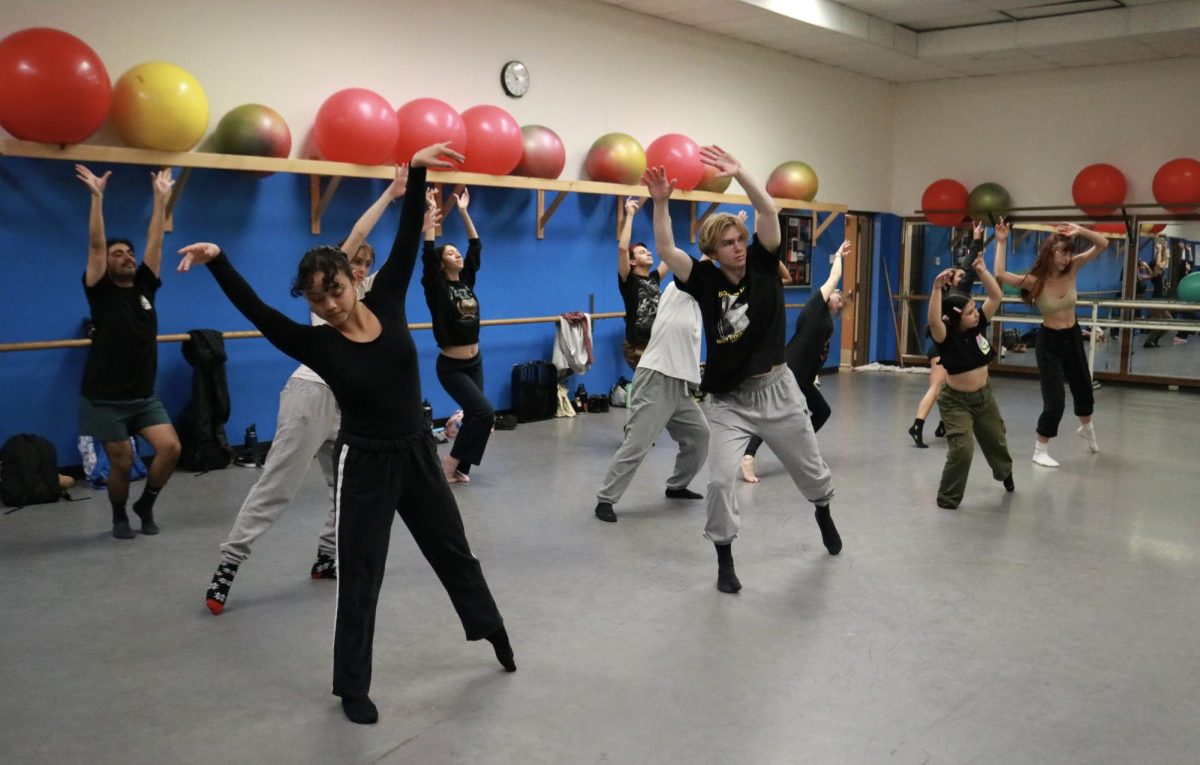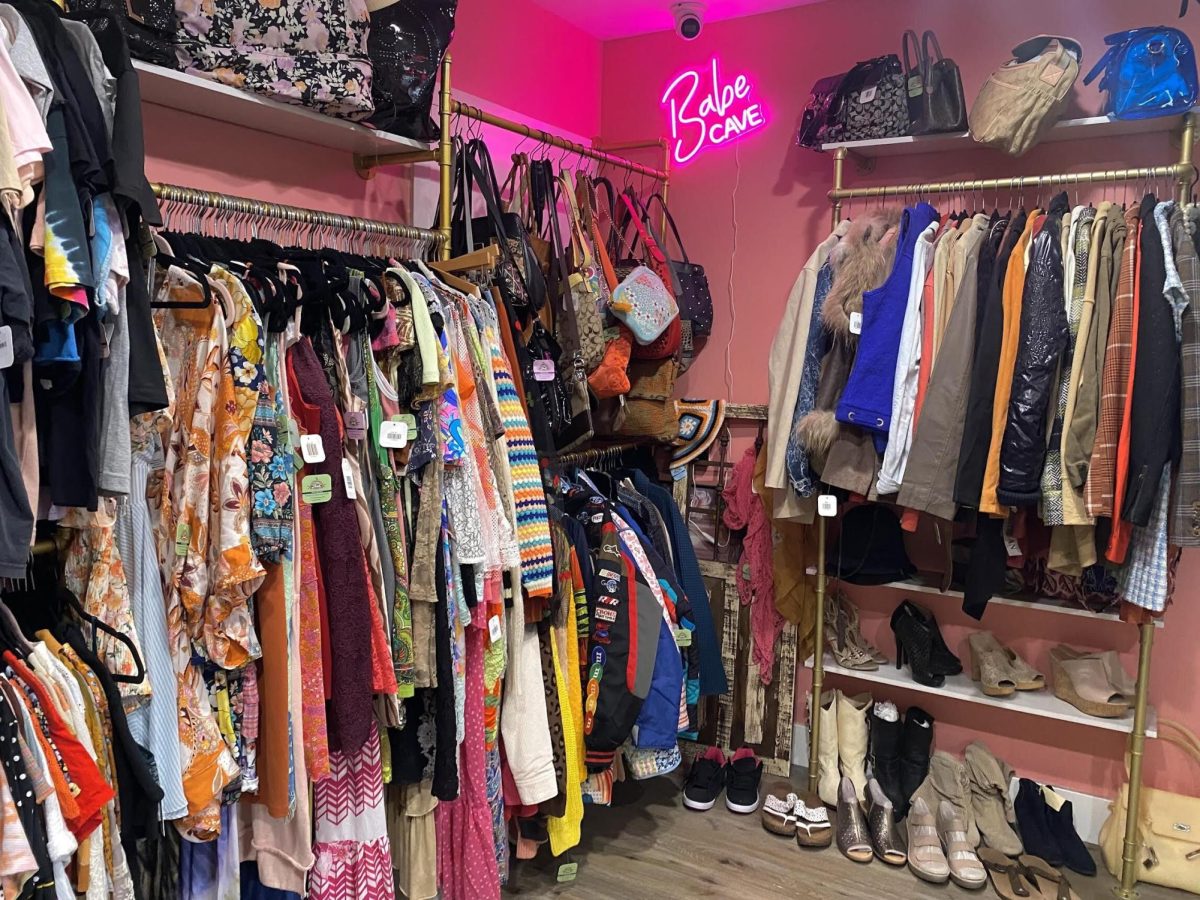Pop stars during the ’80s such as Madonna and Cyndi Lauper sparked a revolutionary trend by surrounding their wrists with rainbows of rubber bracelets.
Today, bracelets can symbolize anything from sexual activities to cancer cures.
However, the idea that bracelets can convey certain messages is not new to the fashion world. According to www.rubberbracelets.com, rubber jewelry was a symbol of nonconformity that arose from the punk scene.
According to the site: “Punks would put black rubber o-rings around their wrists and wear them as bracelets in the late ’70s and early ’80s. They represented anti-jewelry, as rubber has practically no value (compared to traditional jewelry materials) or status.”
“Jelly bracelets,” or thin, round, rubber bracelets that come in a variety of colors, opaque and translucent, emerged in the ’80s as a fashion statement. Women and girls would sport hundreds of these bracelets at a time.
The wrist-to-elbow bracelet fashion phased out until the late ’90s and 2000s, when the fad regenerated through pop stars like Avril Lavigne.
However, somewhere throughout their history, the jelly bracelets began to take on sexual symbolism. Commonly referred to as “sex bracelets,” “sexlets,” or “snap bracelets,” each color is sometimes used to depict a certain sexual activity.
According to www.sex-bracelets.com, the bracelets are sometimes used as either a token for sex or a depiction of past sexual experiences. The web-site states: “sex bracelets are inexpensive and colorful jelly bracelets. They sometimes signal, based on their color, willingness to perform a certain sex act. They are sometimes used in games in which sexual favors are exchanged.”
In one particular game called “Snap,” wearers of the bracelets challenge another person to snap the bracelet off their wrist, resulting in a sexual IOU.
“One person attempts to break or ‘snap’ a sex bracelet off of another person. The broken bracelet then becomes a ‘sex coupon’ that the snapper can exchange for the sex act signified by the bracelet’s color. It is cheating if you simply pull the bracelet off the arm without breaking it, or use a knife or scissors to cut it,” according to the site.
Though www.sex-bracelets.com believes that “the game is rumored to have first been played at college fraternity parties,” there is no certain explanation as to how the game and color coding system originated.
Still, the majority of people who sport jelly bracelets regard them as nothing more than an accessory.
Nancy Guerra, liberal studies major, wears several jelly bracelets around her arms.
Although she has heard the bracelets referred to as “sex bracelets” before, she continues to wear them for accessory purposes only.
“I heard the black ones were sex bracelets. I wear them because I like them, just for fun,” Guerra said.
The comfortably and affordability of rubber bracelets made this jewelry a perfect tool for fundraising. According to www.rubberbracelets.com and www.laf.org, Tour de France champion Lance Armstrong and Nike collaborated to create the yellow “LiveStrong” bracelets.
Modeled after the Nike “Baller ID Bands,” which are rubber bracelets imprinted with sports-related phrases, the LiveStrong bracelets are sold for $1 to raise money for cancer research through the Lance Armstrong Foundation.
According to www.rubberbracelets.com “At last count, more than thirty million dollars had been raised through the sale of the bracelets, far exceeding anyone’s expectations.”
With the success of the LiveStrong bracelets, many other organizations have adopted the rubber bracelet as a symbol of support, often donating proceeds to charity or research.
According to www.rubberbracelets.com, these rubber bracelets, often called “awareness bracelets,” have a color code of their own, using the basic color wheel as well as camouflage and tie dye prints. Breast cancer, HIV/AIDS, domestic violence, troop support and tsunami relief are among the many causes of awareness bracelets.
Elisha Reyes, marine biology major, sports two awareness bracelets clipped to her backpack; a yellow LiveStrong bracelet and a red bracelet with the words, “Never give up,” to support Amyotrophic Lateral Sclerosis (ALS), for muscular dystrophy disease.
“I saw people wearing it, so I was like, ‘Oh what’s this new trend that’s going on?’ And my boyfriend’s an athlete, so he told me about it. People were wearing it, so I was just curious what it was all about,” Reyes said. “Since it was ‘LiveStrong,’ it was a positive thing to do. I think it’s just a good way to spread the word to live strong, to go ahead, to never give up.”
Bracelet symbolism even extends to unify strangers of the same interests and lifestyles. Websites such as www.bluedragonfly.org, an online community for those with eating disorders, sell “solidarity bracelets” as a way for people with eating disorders to connect as a community.
According to the website: “One of the great things about the bracelet is that every so often, you see someone else with one, and you have a moment of connection with them. The only ones who know what it means are the ones who have one themselves. It’s our own private thing that only it’s wearers know the depth of the meaning of.”
According to www.bluedragonfly.org, the handmade, beaded bracelets originated as a symbol for the Blue Dragonfly eating disorder support community.
The decisions for the appropriate colors and meanings were chosen by the Website’s forums. The color-coding for these bracelets signifies anorexia, bulimia, recovery and self-injury.
There are also bracelets to show clarity, control, strength and perseverance.
Willow Springer, art major, said she believes the “ana/mia bracelets,” as they are often called, are a more than simply a cry for help.
“I don’t know why you’d want to be proud of your eating disorder. I don’t see why you’d want to show it off if you didn’t secretly want help. It just doesn’t make sense to me,” Springer said.
Types of Bracelets
Livestrong: These bracelets came from professional athlete Lance Armstrong. The money spent on this yellow jewelry goes to cancer research.
Solidarity Bracelets: These bracelets are worn by people with eating disorders, or to symbolize acts such as self-injury. People who wear these bracelets believe that they belong to a community.
Jelly Bracelets: Also known as “sex bracelets”; Different colors are worn to show different types of sexual acts the wearer has performed.






